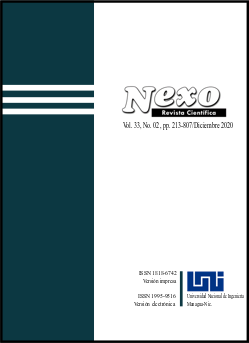Evaluating the degree of physical resilience of Babol against earthqakes
DOI:
https://doi.org/10.5377/nexo.v33i02.10765Keywords:
physical resilience, earthquake, Babol, multi-criteria decision-making model, integration modelAbstract
The management of natural disasters requires understanding their essence, making accurate assessments, planning, and providing appropriate solutions. The purpose of this study is to evaluate the physical resilience of the 22 neighborhoods of Babol located in the north of Iran against earthquakes. The methodology of this applied research study is descriptive-analytical. In this regard, by initially studying similar national and international studies, using the expert opinion of seismology and urban planning specialists and interviewing experienced urban managers in the field of crisis management, 30 effective indices on physical resilience against earthquake risk were extracted. Then, using analytic functions of GIS software and multi-criteria models including AHP, TOPSIS, VIKOR and COPRAS, the physical resilience of Babol against earthquakes was evaluated. Then, in order to obtain accurate results, using the integration models including the Statistic, BORDA and COPELAND, the physical resilience of Babol's 22 neighborhoods was evaluated. The analysis of the final GIS maps shows that neighborhoods 2, 3, 4, 5, and 11 have very high physical resilience and neighborhoods 6, 8, 10, 12 and 14 have very low physical resilience against earthquakes.
Downloads
Downloads
Published
How to Cite
Issue
Section
License
Copyright (c) 2021 Array

This work is licensed under a Creative Commons Attribution 4.0 International License.
The authors who publish in Nexo Scientific Journal agree to the following terms:
- Authors retain the copyright and grant the journal the right of the first publication under the license Creative Commons Attribution License https://creativecommons.org/licenses/by/3.0/, which allows others to share the work with a recognition of the authorship of the work and the initial publication in Nexo Scientific Journal.
- Authors may separately establish additional agreements for the non-exclusive distribution of the version of the work published in the journal (for example, in an institutional repository or a book), with the recognition of the initial publication in Nexo Scientific Journal.
- Authors are allowed and encouraged to disseminate their works electronically (for example, in institutional repositories or in their own website) before and during the submission process, as it can lead to productive exchanges, as well as earlier and greater citation of published works.











